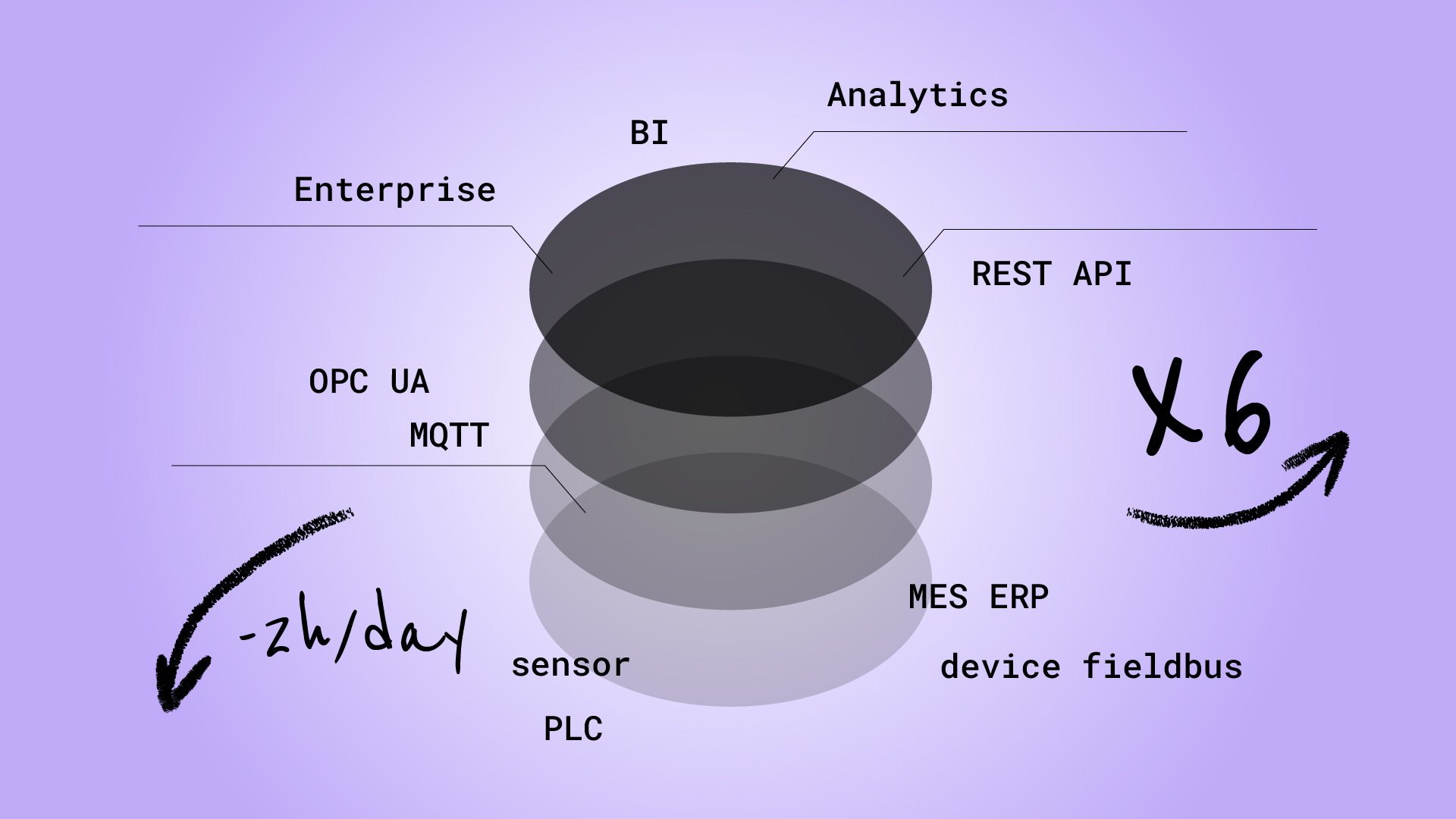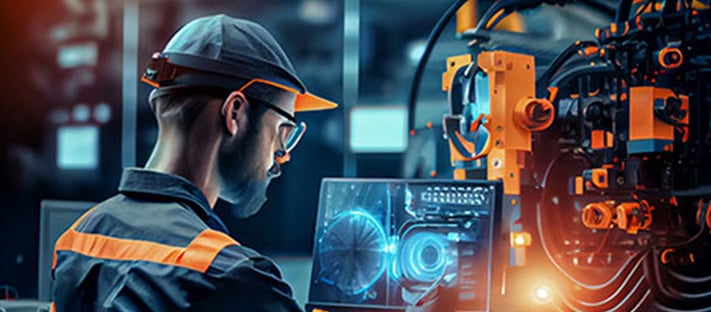
Smart manufacturing and smart factory. Do you know the differences?
 It is critical to differentiate between "smart factory" and "smart manufacturing" and comprehend the advantages they present to manufacturing companies interested in implementing cutting-edge digital technologies.
It is critical to differentiate between "smart factory" and "smart manufacturing" and comprehend the advantages they present to manufacturing companies interested in implementing cutting-edge digital technologies.
The use of IoT devices in manufacturing encourages communication between operators and machinery, improving the efficiency of production processes and reducing overall company costs. This paradigm is known as the "connected factory."
The use of IoT devices in the manufacturing industry
The presence of new IoT paradigms, technologies and tools, including the use of artificial intelligence, is generating the Industrial Internet of Things (IIoT), or the integration of manufacturing devices and systems with the Internet in the manufacturing industry.
In Italy, too, this phenomenon is growing, as evidenced by data from the Politecnico of Milan Internet of Things Observatory, which showed that more than 50% of large Italian companies have launched at least one industrial IoT project in the last three years. The technological innovations that have enabled the advent of Industry 4.0 can be divided between those that act on the operational level and those that affect business management.
Technologies that have an operational impact include the Internet of Things, 3D printing, additive technologies, robots and cobots, among others. In contrast, technologies that affect business direction and management include the Internet of Things, 3D printing, additive technologies, robots and cobots, and many others.
With IIoT, operation technology (OT) and information technology (IT) come together, enabling greater automation and better management of production processes. OT technologies are used to automate machinery and industrial plants, while IT technologies enable data acquisition, management and analysis. In this way, IIoT promotes the creation of a manufacturing environment in business processes that are highly connected, efficient and secure.
The smart factory: efficiency and resilience
The transformation of the manufacturing industry into a smart factory takes place through the implementation of hardware and digital systems that enable the communication and interconnection of the defining elements of the manufacturing environment, such as machinery, equipment and facilities.
The use of IIoT technologies within the smart factory enables a zero-defect approach to product quality control, the prevention and detection of plant malfunctions and machine breakdowns through advanced monitoring systems, and the monitoring of production progress through machine-to-machine connections.
By adopting IIoT technologies, the efficiency and resilience of production processes can be improved, operators can be ensured greater safety, and costs associated with plant downtime can be reduced. By collecting and analyzing data in real-time, it will be possible to understand how resources are being used and take action to limit their use. In addition, the predictive approach will make it possible to act in advance of failures and prevent them, reducing plant maintenance and repair costs.
Smart manufacturing: smart production
With smart manufacturing, the entire production becomes smart, and not only in operations but throughout the factory. Innovation involves every element, from the factory to products, from employees to co-workers.
Advanced technologies have allowed for the emergence of Industry 4.0, which is divided into two categories: those that can be used to improve operations (e.g. IoT, 3D printing, robotics, etc.) and those that are related to business control and management (e.g. big data, cloud computing, and the Industrial Internet).
The transition to Industry 4.0 is now favored, albeit to a lesser extent than in previous years, by tax relief. Small and medium-sized enterprises, as well as all organizations interested in promoting business innovation and digital transformation, can benefit from advantageous tax breaks to access these technologies.
This plan provides for the introduction of innovative technologies, support for training and the spread of digital culture within companies. In this way, it seeks to boost the digital transformation of Italian companies, encouraging the adoption of advanced solutions and improving the country's competitiveness in the global context.
In conclusion
The use of IoT devices in the manufacturing industry is becoming increasingly widespread, thanks to the possibility of integrating production systems with the Internet, generating the IIoT.
IIoT promotes the creation of a highly connected, efficient and secure manufacturing environment, enabling greater automation and better management of production processes. By collecting and analyzing data in real-time, it will be possible to understand how resources are being used and take action to limit their use, prevent breakdowns, and reduce plant maintenance and repair costs.
All this is made possible by Alleantia technology, which facilitates the integration of data from any industrial asset and provides a complete picture of those needed to optimize production processes.



